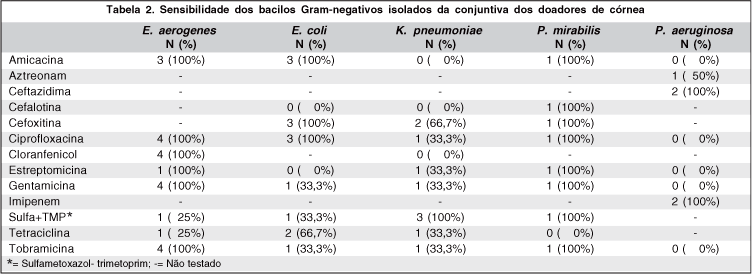PURPOSE: To determine aerobic bacterial microbiota of the conjunctiva of cornea donors and its patterns of susceptibility to antibiotics; verify the number of corneas used for transplant and the average time of preservation in solutions with gentamicin and streptomycin; trace the profile of donors and receptors of cornea. METHODS: Clinical specimens were collected from the inferior bag of the conjunctiva of both eyes of 40 cornea donors. The samples were inoculated into acid blood, chocolate and MacConkey agars, and the antibiogram was performed by the Kirby-Bauer method. RESULTS: The frequency of positive cultures of the conjunctiva of cornea donors was 72.5%, with Gram-positive totalling 81.6% and only 18.4% of the samples were identified as Gram-negative. Vancomycin inhibited 100% of Gram-positive microorganisms, while sensitivity of the Gram-negative to gentamicin was 53.8% and to streptomycin 30%. Most donors and recipients were men, the average time between death and enucleation was approximately 2 hours and preservation in solution with gentamicin and streptomycin was around 7 days. Neoplasms and more than one associated cause were the most frequently causes of death. Keratoconus was the main indication for transplant (51.7%). CONCLUSIONS: Coagulase-negative Staphylococcus was the most frequently isolated microorganism, presenting variable sensitivity to antimicrobians. The amount of corneas used for transplant was below the number of available corneas. Donor and receptor profiles were very heterogeneous regarding most of the analyzed variables.
Conjunctiva; Endophthalmitis; Corneal transplantation; Tissue donors; Microbial sensitivity tests



